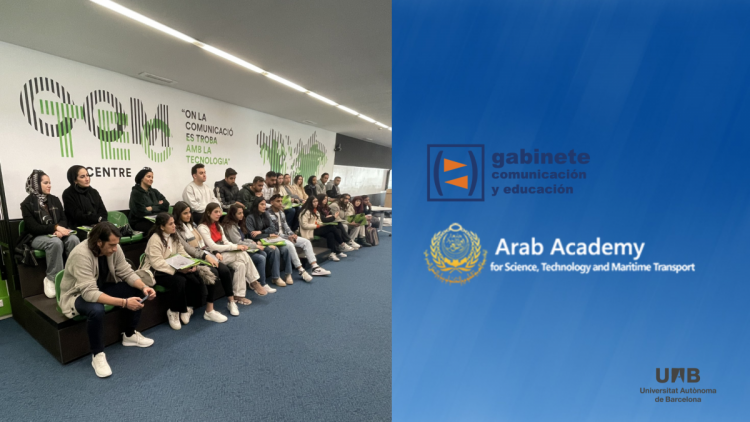Egyptian students from the Arab Academy for Science Technology & Maritime Transport (AASTMT) are part of the new Spring Arab School program. In the on-site classes, which are taking place from March 3 to May 31, students are being trained in different subjects related to audiovisual communication, media literacy, photography, digital writing and mobile journalism, among others.
The inaugural conference was given by José Manuel Pérez Tornero and Santiago Tejedor, academic directors of the Spring Arab School, Cristina Pulido, academic coordinator and María José Recoder, member of the team. The students also had the opportunity to attend the conferences ‘What is the future of universities’, given by Marius Martínez, Vice-rector of International Relations of the UAB and ‘Communicating in the field of sport: the case of the Olympic Games‘ by Emilio Fernández Peñ, director of the Center for Olympic Studies UAB.
Throughout the different weeks, students will study the following subjects: multimedia effects, media literacy, photography, script writing and Spanish language classes.
The Gabinete de Comunicación y Educación and the Arab Academy for Science Technology & Maritime Transport (AASTMT) have organized this academic exchange space, characterized by learning through virtual classes, which aims to promote intercultural dialogue between students from the Cairo and Alexandria campuses. During this time, students will strengthen their skills in different fields and will deal with multiple topics such as the production of multimedia and digital content, introduction to new technologies, programming with Python, data analysis and big data, main applications of artificial intelligence or strategies and uses of sustainable development in international law, among others.
The agreement between the Autonomous University of Barcelona and the Arab Academy for Science Technology and Transportation of Egypt aims to promote intercultural dialogue and synergies between the two institutions.





